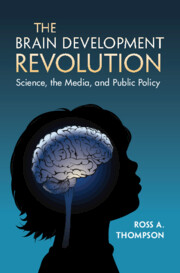Book contents
- The Brain Development Revolution
- The Brain Development Revolution
- Copyright page
- Contents
- Figures
- Preface
- Chapter 1 Science Does Not Speak for Itself
- Chapter 2 The Supreme Court Considers Adolescence
- Chapter 3 Dispatches from the Laboratory
- Chapter 4 I Am Your Child
- Chapter 5 “Follow the Science”
- Chapter 6 Framing Developmental Science
- Chapter 7 Who Speaks for Developmental Science?
- Notes
- Works Cited
- Index
- About the Author
Chapter 3 - Dispatches from the Laboratory
Published online by Cambridge University Press: 24 August 2023
- The Brain Development Revolution
- The Brain Development Revolution
- Copyright page
- Contents
- Figures
- Preface
- Chapter 1 Science Does Not Speak for Itself
- Chapter 2 The Supreme Court Considers Adolescence
- Chapter 3 Dispatches from the Laboratory
- Chapter 4 I Am Your Child
- Chapter 5 “Follow the Science”
- Chapter 6 Framing Developmental Science
- Chapter 7 Who Speaks for Developmental Science?
- Notes
- Works Cited
- Index
- About the Author
Summary
Two stories of brain development are described. The first is from the perspective of developmental neuroscience, describing the core story of developing neurons, synapses, and neural networks, and showing how these create the brain’s developing capacities for memory, language, self-regulation, and other abilities. The second story is from the perspective of developmental science, summarizing the large literature on developing concepts and reasoning skills and the influence of early relationships in their growth. The two stories are then compared to reveal how complementary they are (as we should expect, since they both concern the developing child), but how their integration is still a work in progress, especially because the stories of brain and mind have somewhat different perspectives on development deriving from different research methods, levels of analysis, vocabulary, and concepts. The last section describes overlooked topics in the brain development story that was publicly messaged: the effects of poverty, fetal brain “programming,” and adolescence as a period of renewed brain plasticity and growth. The chapter shows how the science of brain development is constantly evolving, how the interaction of mind and brain is only slowly becoming understood, and the selectivity of the public communication of developmental brain science.
Keywords
- Type
- Chapter
- Information
- The Brain Development RevolutionScience, the Media, and Public Policy, pp. 62 - 103Publisher: Cambridge University PressPrint publication year: 2023



